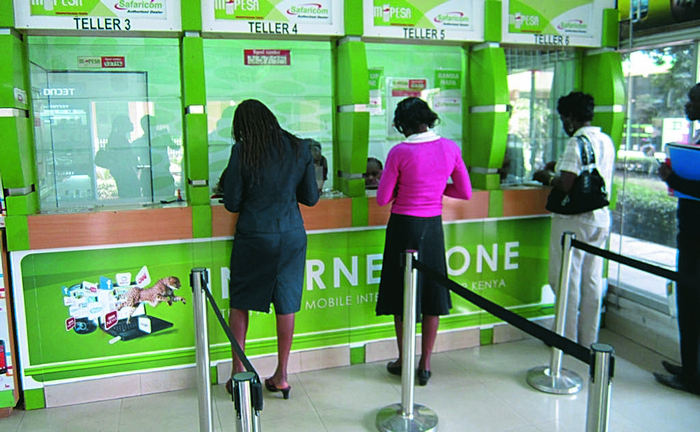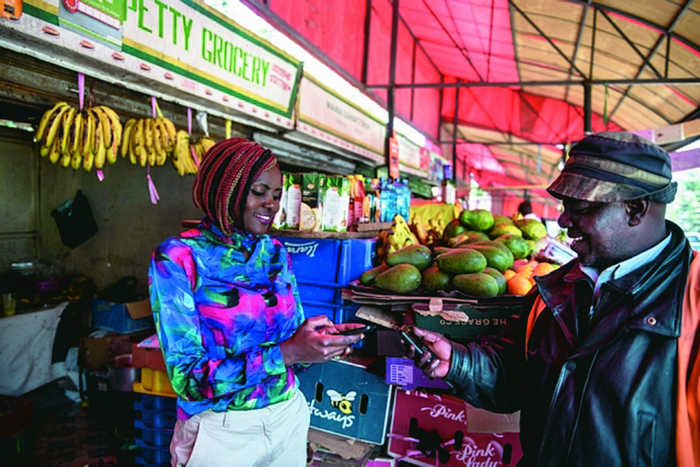It has also led to development of banking sector in the country
Kenya’s banking sector has its roots related to banking in India. The Central Bank of Kenya traces these roots thus: “It all started with Indian money lenders operating quasi bank services probably as early as the 18th century but the first recognizable bank was Jetha Lila Bankers from India, which was established in Zanzibar in 1880. In 1889, the National Bank of India appointed the trade house of Smith Mackenzie to be their agent in Zanzibar. Smith Mackenzie had a Mombasa branch in 1887 which was taken over by the Imperial British East Africa (IBEA) in 1888. The National Bank of India established its own office in Zanzibar in 1892. In July 1896 the National Bank of India established a branch in Mombasa renting premises from Sheriff Jaffer. The spread continued to 1904 when they opened a branch in Nairobi.”
This connection apart, the banking sector in the country today is quite developed. With more banks per person than all the other major African countries, Kenya is a world leader in mobile banking. Banking experts see the strength of the sector in the country’s ability to create and grow products as well as institutions that respond to the needs of the customers. Today, the country has mobile and internet banking apart from a well-developed traditional banking medium. Also, many banks see the prospects of spreading their wings to other African countries after creating a platform in this country.
DEVELOPED BANKING SYSTEM
Currently, Kenya has 44 banks – 31 locally owned and the rest foreign. Among the locally owned banks, the Kenyan government has a shareholding in 3, while 27 are commercial banks and one a mortgage finance institution, called Housing Finance.

M-Pesa is omni-present in Kenya
The top banks in the country today are:
Equity Bank Kenya offers retail banking, microfinance and other related financial services. The bank is known for its Equitel mobile payment and banking platform that provides banking and telecom services to the bank’s customers. The bank has subsidiaries in Kenya, Tanzania, Uganda, Rwanda, and South Sudan.
Standard Chartered Bank Kenya came to be established in 1911 and today it has 33 branches across Kenya and 90 ATMs.
Barclays Bank Kenya is one of the oldest banks in Kenya having been operating for over 97 years. The bank has a robust mobile banking and internet platform. It offers superior services through its 24/7 call center and has 119 branches in Kenya and 230 ATMs.
Kenya Commercial Bank has the largest branch network in Kenya, having 168 branches across the country.
Cooperative Bank of Kenya has the second largest customer base
Diamond Trust Bank of Kenya is engaged in provision of banking, insurance and other related services. It has 47 branches in Kenya that offer current, savings and deposit accounts, money transfer, debit and credit cards, and asset finance among others. It also has subsidiaries in Tanzania, Uganda, and Burundi.
National Bank of Kenya is partly owned by the government of Kenya. The bank was established after independence with the aim of giving Kenyans access to credit.
The other leading banks that operate in the country include Bank of Africa, CFC Stanbic, Chase Bank, Ecobank, Family Bank and Housing Finance.
OTHER OPERATORS
The banking and financial services sector in the country also has other operators. Microfinance Institutions offer retail lending widely, including to SMEs. Two MFIs – Faulu, which was recently acquired by South African insurer Old Mutual, and Kenya Women Finance Trust – have a combined 80% share of the market. There are also some 4000 savings and credit cooperative societies (SACCOs), of which 180 are deposit-taking SACCOs licensed by the SACCO Societies Regulatory Authority. SACCOs are often a first choice for borrowers, particularly in the middle class. In addition, there are two Islamic banks – Gulf African Bank and First Community Bank. The banking act has not yet been amended to allow Islamic products and so the Central Bank of Kenya approves them on a case-by-case basis. The two banks have together a customer base of 150,000 but with 4 million plus Muslims in the country, these banks have huge potential for growth.
CENTRAL BANK
The Central Bank of Kenya is responsible for formulating monetary policy in the country with an aim of achieving and maintaining price stability. The central bank also promotes financial stability, an effective and efficient payment, clearing and settlement system, formulates and implements foreign exchange policies, holds and manages foreign exchange reserves, issues currency and is the banker, adviser and fiscal agent for the government.
It has been pushing the banks towards capitalization using a risk-based approach and has a robust capital adequacy ratio plan in place. January 2015 was the deadline for banks to increase the total capital to risk-weighted assets ratio to 14.5%, up from 12%. The minimum core capital to risk-weighted assets ratio is 10.5%, up from 8% previously. Banks have to boost cash reserves at the end of each month in terms of the new cash reserve ratio cycle, which results in a tightening of market liquidity.
FOREX TRANSACTIONS
In Kenya, residents and non-residents are permitted to buy or sell foreign exchange, without restriction, to and from authorized dealers up to the equivalent of US$10,000. Amounts exceeding this limit require documentation to show the purpose for the transaction. The government has enacted an Anti-Money Laundering law in 2010, which is seen as a major step in the fight against money laundering in the country and region given Kenya’s unfortunate position as a base or transit point for money laundering activities.
CRUCIAL MOBILE BANKING
Any discussion on banking in Kenya is incomplete without a mention of the country’s affinity for mobile banking. It is often mentioned that smartphone payments are gaining ground in the US, but mobile money is old news in Kenya. Kenyans have gained admiration for their ability to use their phones to pay for goods and bills, make deposits and withdraw cash from agents, buy insurance, for public transport and to transfer to relatives. A good majority of the country’s population has adopted mobile payment service, notably, M-Pesa, which entered the country in 2007. It was Vodafone’s Safaricom that brought in a simple method of texting small payments between users. Today, M-Pesa has 30 million users in 10 countries and a range of services including international transfers, loans and health provision.
M-Pesa was intended as a payment system for microfinance institutions to enable repayments of loans through mobile phones in far-flung and remote areas. But, it gained acceptance as a universal application for money transfer. Cash can be sent from one place to another more quickly, safely and easily than taking cash in person. The system proved to be a welcome relief for people to remit money from cities to the rural villages.

Kenya has one of the highest mobile penetration in the world
Today, apart from M-Pesa there are at least a dozen mobile money systems in operation in the country, the leading ones being Orange, Airtel, MobiKash, Tangaza Pesa and Equity Bank, as well as other banks and service providers.
FINANCIAL INCLUSION
Mobile banking has helped the country in other ways. It has been ranked the top country for the third consecutive year in a survey on financial and digital inclusion by US-based Brooking Institution’s Center for Technology Innovation. Its latest report said Kenya is at the top of its Financial and Digital Inclusion Program (FDIP) scorecard in a survey of 26 countries across the world. The report said: “For the third year in a row, Kenya ranked at the top of the FDIP scorecard, driven by its robust commitment to advancing financial inclusion, widespread adoption of mobile money services among traditionally underserved groups, an increasingly broad range of mobile money services (including insurance and loan products), and an enabling regulatory environment for digital financial services.”
The report also mentioned that 75% of adult Kenyans have a financial account, with 71% of women owning financial accounts. This has been largely driven by the widespread use of mobile money solutions that have made it easier and cheaper to send and receive money as well as to take out loans.
ADOPTION OF ICT
Kenyan banks have adopted information and communication technologies in a significantly large measure. They have invested huge funds in implementing self and virtual banking services like SMS banking, ATMs, anywhere banking systems, core banking solution, electronic clearing systems and direct debit among others. Banks have also invested in upgrades of their ICT systems to enable them to handle a wider variety of customer service functions. For example, Cooperative Bank and Equity Bank Kenya are encouraging their customers to migrate from banking halls to agency services and mobile banking. Equity Bank has its own mobile banking service Equitel. Kenya Commercial Bank could achieve 70% of its total transactions handled through the non-branch channels.
GROWTH OF FINTECHS
As the African continent as a whole offers outstanding opportunity for the growth of the financial services sector, there is substantial scope for a fintech startup ecosystem too to flourish. Kenya has several fintech companies. Some of them are engaged in work on ideas ranging from blockchain system to uses of satellite images and GPS functionalities. Many of these fintech firms have B2B models and are partnering with banks and MFIs to bring new services to market. An example is Apollo, which is working on a tool to make use of satellite images combined with land GPS locations to assess farmers’ loan repayment capacity and cashflow timing. Similarly, Entrepreneurial Finance Lab has developed a psychometric scoring tool that can be used in credit underwriting. This is going to help the rural population in the country who do not have any lending histories or formal income sources to finance biomass cook stoves and power sources. Another firm, Tulaa, is developing a mobile wallet through which smallholder farmers can save and borrow toward the purchase of discounted agricultural inputs, such as fertilizers and seeds.







